When Prince Henry the Navigator launched Portugal’s Golden Age of Discovery in 1415, Cabo de Sao Vicente marked the end of the known world — the limit of the charted seas. Yesterday I arrived in Cabo de Sao Vicente, marking the end of my journey on the Historical Way, and discovered a parking lot and an ice cream cafe.
But more on that later.
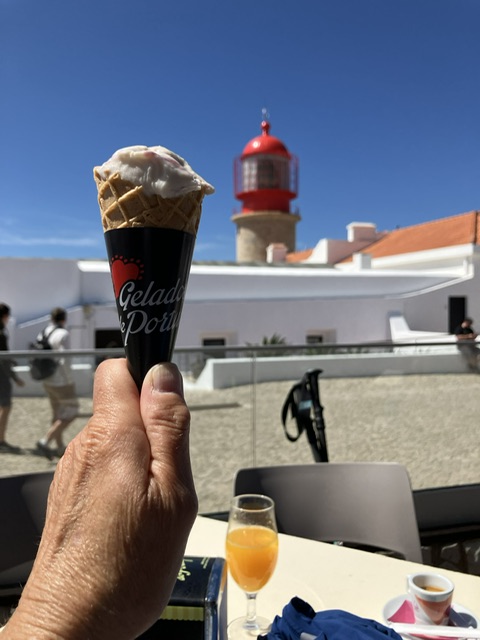
During the 15th and 16th centuries, Portugal ruled the oceans with vessels and navigation skills that surpassed that of its rivals in Spain and England. And the voyages of explorers like Vasco De Gama eventually pushed the ‘known world’ to include Africa, India, Japan, and South America. Most of those voyages set off from here — from the port of Sagres, tucked on a bay just east of the cape.
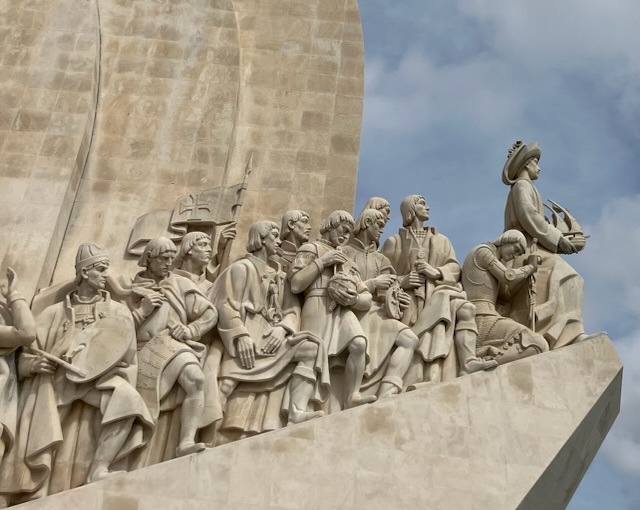
Portugal profited mightily from the slave trade and from the gold mines of its colonies in Africa. However, unlike Spain and England, Portugal did not invest its riches in its naval fleet. Instead, Portugal’s ruling classes built summer castles, and winter castles, and spring and autumn castles. They gilded their homes and churches with gold. And, as Ann pointed out, they indulged in extravagances such as starching their shirts with egg whites. And eventually, the colonies rebelled, the gold ran out, and Portugal’s days as a world naval power ended.
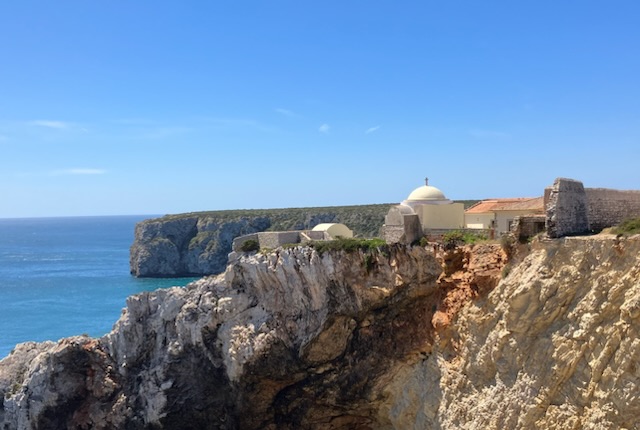
Today, Cabo de Sao Vicente houses a parking lot full of tour buses and RVs, souvenir shops, a smattering of tired hikers, and an outdoor cafe. To celebrate the end of the Historical Way, I treated myself to an ice cream, a (surprisingly good) espresso, and a fresh-squeezed orange juice.
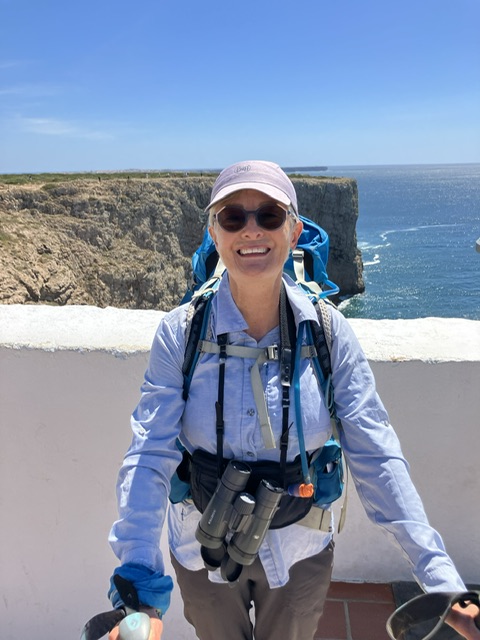
The winds were noticeably warmer as I rounded the cape, the beaches were whiter, and the waters more turquoise. The influence of the Mediterranean perhaps?
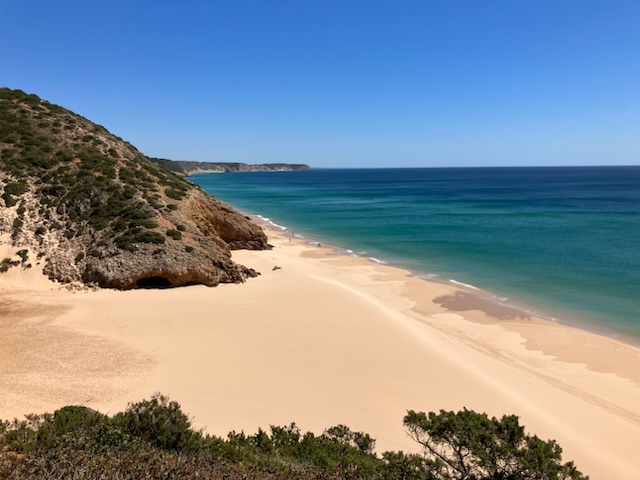
This section of the coast is characterized by small ports and beaches separated by headlands covered in wildflowers.
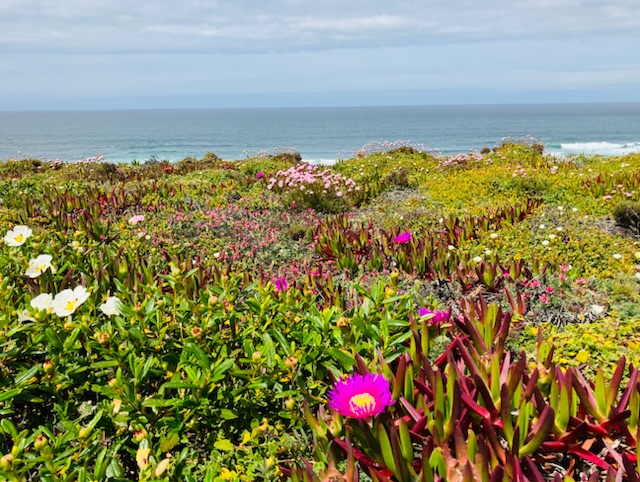
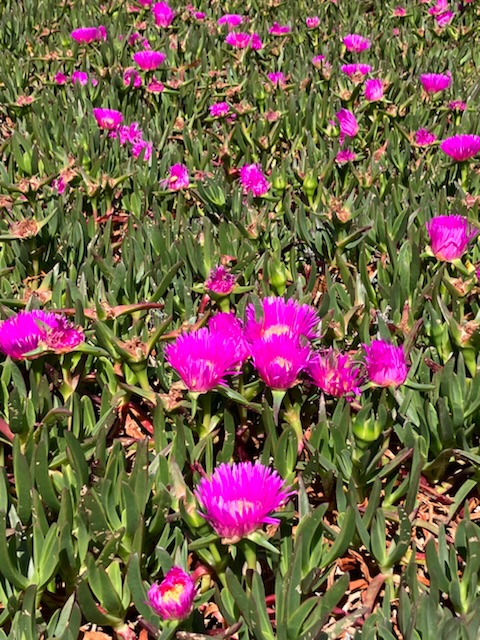
The trekking has become much more difficult. At times today it was more like scrambling as I repeatedly put my hands on rocks to haul myself up the trail! I head east for two more days, before turning around and trekking west and north toward Porto Covo.